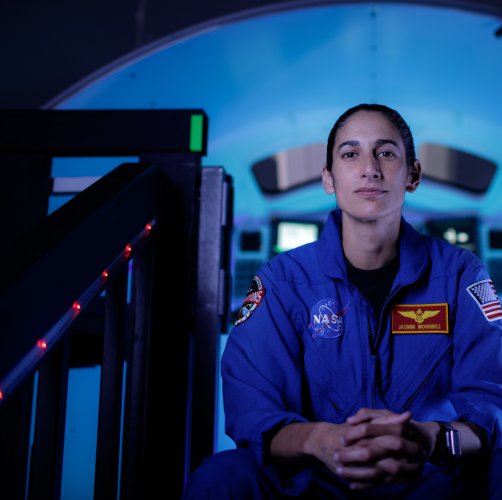1 of 3 | A cloud of steam forms from water used to cool the stand during a brief test of NASA's SLS moon rocket core stage in Mississippi on Saturday. Photo courtesy of NASA
ORLANDO, Fla., Jan. 16 (UPI) -- NASA's plan to test its new moon rocket fell short of a scheduled eight-minute test-firing Saturday in Mississippi, as the engines were shut down at just over a minute into the test.
The 212-foot-high core stage of the rocket roared to life at 5:27 p.m. at the John C. Stennis Space Center. The test created huge clouds of steam as 300 gallons of water per minute cooled the test stand to prevent overheating.
But NASA was unsure if the shortened test would require major alterations to the rocket, NASA Administrator Jim Bridenstine said in a post-test news conference.
"I don't think at this point that we have enough information to know" if the rocket could be moved to a launch pad, Bridenstine said.
Even if NASA wanted to redo a test-firing immediately, crews would take four to five days to refuel and retool the core stage, NASA officials said.
The firing was the loudest, most dramatic event at the facility since Apollo-era Saturn V rockets were tested there in the 1960s. One of the four engines on the rocket stopped after just a minute, while three burned a little longer.
NASA leaders had warned that the test could be interrupted if test controllers felt the rocket could be damaged for some reason since the test was performed on the actual core stage to be used for a launch slated for November.
NASA engineers also had said the rocket could be approved for launch without a complete test if enough data were gathered.
"We do have a lot of good data to go look at, and hopefully we can move on from here," NASA engineer Alex Cagnola said during a live broadcast Saturday.
The test was meant to provide insight into how the rocket would perform during a launch toward the moon, John Honeycutt, SLS program manager, said during a press conference Wednesday.
"It is a very large, very complex machine," Honeycutt said. "I think it's important that everybody understands this is a test program. It's not just a verification, a demonstration program."
The eight-minute firing time represented how long those engines would fire to propel the rocket to 100 miles above the Earth. NASA planned a press conference to announce more results of the test on Saturday evening.
The rocket and its engines were covered with 1,400 sensors that will measure pressure, temperature and vibration, among other data, NASA officials said. Those engines were recovered and refurbished from successful space shuttle missions.
The test consumed over 700,0000 gallons of supercooled propellant -- liquid hydrogen and liquid oxygen.
NASA intends to refurbish the core stage and ship it to Kennedy Space Center in Central Florida in February. There, the space agency plans to launch it on an uncrewed mission around the moon by November.
When the rocket is prepared for a lunar launch, it will have two large solid-rocket boosters to provide 8.8 million pounds of total thrust -- 15 percent more power than the Saturn V rocket that took astronauts to the moon during the Apollo era.
But the test only included four core-stage engines for 1.6 million pounds of thrust, which is slightly less than a SpaceX Falcon 9 rocket at 1.7 million pounds of thrust.
Hundreds of technicians and engineers are at the space center from NASA and Boeing, which built the rocket, and Aerojet Rocketdyne, which built the engines.
The first Artemis mission is part of NASA's plan to return astronauts to the moon by 2024, but that goal seems unlikely to be met. It was a priority of President Donald Trump's administration but has not received the congressional funding NASA requested.
The SLS program is over budget at more than $9 billion, according to an official report from NASA's Office of Inspector General.
Jasmin Moghbeli
Moghbeli poses for a portrait in the Systems Engineering Simulator for the International Space Station and advanced spaceflight programs at the Johnson Space Center on July 9, 2019. She will train for the moon mission. Photo by Bill Ingalls/NASA
















